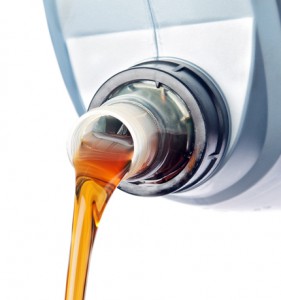In January 2014, Kline & Company, a worldwide consulting and research firm serving needs of organizations in the lubricants and base stocks industry, introduced its monthly Base Stock Margin Index, a characterization of recent cash margin contributions in the U.S. base oil market over the past 24 months.
The Index estimates cash margin contributions associated with U.S. Group II base stock production. It simulates EBITDA before the deduction of corporate SG&A expenses for typical VGO-based virgin base stock plants and RFO-based re-refineries.
“The sustained low crude oil price during the first quarter of 2016 provided a temporary month of strong margins in January,” noted Ian Moncrieff, Vice President of Kline’s Energy Practice. “However, once the pricing lag for base oils caught up with feedstocks, February and March proved to be tougher and tougher months for refiners.”
“Brent crude oil’s monthly average of $30.70 per barrel for January was the lowest monthly average since December 2003. By the end of January, another round of declines to base oil postings was announced; however, margins, at this point in time, improved relative to December, as this most recent adjustment to postings still lags behind the continued fall to feedstock prices. As for conventional refiners, the weakness in the middle distillate market noted in December was somewhat alleviated, as ULSD cracks above VGO went back to being positive, providing an additional lift to cash margins.”
“Moving into February, both conventional refiners and re-refiners were adversely affected by a simultaneous increase to Brent crude prices and a decrease to base oil postings. While ULSD continued on its moderate rebound—surpassing gasoline prices by $0.063 per gallon—base oil postings were hit again with another round of discounts in the range of $0.12-0.20 per gallon.”
“Finally, during the month of March, the Group II postings were stable, while other API groups and grades showed slight upticks in pricing. Meanwhile, the price of Brent crude oil increased by 18% and was the primary cause for the decrease in margins during this month. Furthermore, the ULSD crack over VGO still remained weak, providing muted returns for conventional refiners.”
“As we continue to follow the EIA’s metric of U.S. ‘lubricant’ consumption, 2015 was a strong year for lubes in the United States, as the total volume of lubricants supplied was a 7% increase over the 2014 level. On average, margins were slightly better in 2015 than in 2014, which is consistent for a period of higher demand and capacity utilization. Despite the total U.S. ‘lubricant’ supply for 2015 appearing to have grown, the global market fundamentals of 2015 still remain weak.”
Looking forward, Moncrieff added, “Kline, in association with SBA consulting introduced the Base Oil Plant Health Check in February. This service combines the industry-leading market, commercial, and technical insights of Kline’s Energy practice, working in close association with Steve Ames. With the underlying weakness to supply/demand and capacity utilization fundamentals, the analysis provided by the Base Oil Plant Health Check can help the refiner evaluate opportunities for enhancing its competitiveness against its industry peers.”
For more information on the Health Check study, the Kline Index, or to inquire about our pricing and margin analysis services to the base stocks industry, please contact Ian Moncrieff, Vice President (Ian.Moncrieff@klinegroup.com) at (973)-615-3680 in Kline’s Energy Practice.

